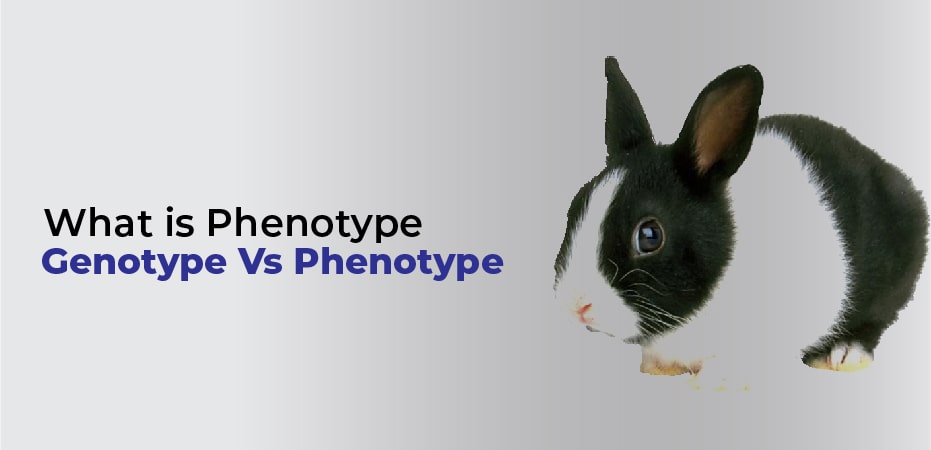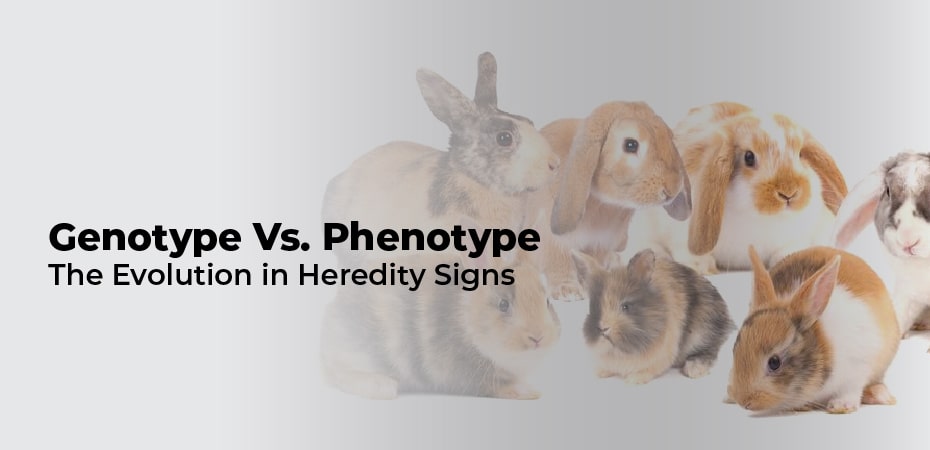Table of Contents
Here is the authentic guide that will help you to discuss Genotype Vs Phenotype – The signs of heredity. Genotype is the number of genes that an organism possesses. Each organism has a phenotype, which consists of its observable characteristics. The environment and its genotype both affect those factors. Therefore, in defining evolution, we are looking at changes in the genotypes. That makes up the population from generation to generation. However, because the Genotype of an organism generally affects its phenotype. The phenotypes that make up the population can also change.

What is Genotype – Genotype Vs Phenotype:
In the genotype vs phenotype inheritance guide, a gene is a part of DNA that encodes a trait. The exact arrangement of nucleotides in a gene can vary between copies of the same gene. The nucleotide consists of a phosphate group, sugar, and base. Thus, a gene can exist in various forms across the organism. These genes come in many different forms known as alleles. The fixed position on the chromosome that contains a specified gene is present as a locus.
An organism that is diploid carries the same allele twice. Or one copy of two different alleles from its parent. If an individual inherits two identical alleles, their Genotype at that locus is said to be homozygous.
However, if there are two different alleles, their genotypes are classified as heterozygotes at this locus. There are either autosomal dominant or autosomal recessive alleles of the same gene. Autosomal dominant alleles are always expressed in preference to recessive alleles. The subsequent combination of alleles that an individual has for a particular gene is his Genotype.
Example of Genotype:
- Lactose Intolerance:
If a child inherits the characteristics of lactose intolerance from a predominant parent, likely, the child is also lactose intolerant.
- Freckles Or No Freckles:
The genotyped cells receive information from the parent cell. Which Genotype predominates determines whether a child develops freckles.
- Height of a Person:
There are a wide variety (T) and short varieties (s) in the genetic composition of individuals. Thus, T and s letters present alleles. The combination of these determines the height. Suppose T is the predominant of two of the four possible combinations (Ts, ss, TT, sT). In that case, the individual is deemed purebred and has a level of T’s genetic information. Increase. Therefore, there is a one-quarter chance that the offspring will be too small.
What is Phenotype – Genotype Vs Phenotype:
The sum of the observable features of an organism is its phenotype. The essential difference between phenotype and Genotype is that Genotype is inherited from the parent of the organism, but not.
The Phenotype affects genotypes, but not all genotypes are available in the same way. There are several factors that influence phenotypes, including:
- Epigenetic Modification
- Environmental & Lifestyle Modification
Example of Phenotype:
Phenotype means “the concrete result of the genotype of an organism.” Therefore, the phenotype is naturally observable. All traits determined by a gene are part of its phenotype, even if only partially. Below are just a few of the myriad examples of biological phenotypes:
- Hair & Eye colour
- Sound of someone’s voice
- Different types of disease
- Colour of a stripe on a cat
- Size and shapes of the spots on a dog’s back
- The skin colour of human
- Environmental factors: Nutrition, Temperature & Stress
The Conception of Genotype Heredity – Wilhelm Johannsen:
Wilhelm Johannsen coined the term “GENOTYPE” & “PHENOTYPE” in 1911. He proposed a theory on the genotype conception of heredity. The two-group genotype vs phenotype form two fundamentally various levels of biological abstraction. The Genotype refers to a genetic material that passes down from generation to generation, and phenotype is an observable or biological trait.
While Wilhelm Johannsen produced novel & innovative research in genetics. He emphasized the need for new terminology. On the other hand, the American geneticist Alfred Henry Sturtevant constructed a genetics map of the chromosome after locating specific genes in the fruit fly Drosophilia.
The Important of Study Genotype vs. phenotype?
The relationship between a genotype & phenotype is useful in a variety of research areas. A particularly interesting site is pharmacological genomics. Liver enzymes required for drug metabolism, such as CYP450, may have genetic variation. Therefore, the human phenotype such as NS. Their ability to metabolize specific drugs depends on the shape of the genes that encode the enzymes they carry. This knowledge is key to determining recommended drug dosages for all population groups for pharmaceutical companies and physicians.
A comparative clinical pharmacology study found that the multiplex approach made a significant difference in drug-metabolizing capacity over what was predicted by genotyping alone. It has important implications for personalized medicine and emphasizes that it must note that it relies solely on genotyping.
What is the best way to examine the relationship between Genotype Vs phenotype?
Scientists can genetically modify an organism so that it no longer expresses a particular gene. For this purpose, they use an animal model such as mice known as knockout mice. We can study the role of specific genes in delivering certain phenotypes by comparing the phenotype of this animal to the wild-type phenotype (i.e., the phenotype that exists when the gene is not removed).
The Mouse Genome Informatics (MGI) initiative has created a database of thousands of phenotypes that can be available and studied, as well as It, is necessary to knock out certain genes to produce each phenotype.
How do Genotype and phenotype provide information about a person?
A genotype of a person contains all the genetic information, even if it is not represented. When a child conceives, the genes she inherits from her parents determine what information she will have.
The phenotype of a person only expresses genes. For example, if a person has one “brown hair” allele and one “blonde hair” allele and has brown hair, their phenotype includes only the expressed gene: brown hair. The phenotype of an individual can change over time. It depends on which genes express and how the environment affects them. A young child with blonde hair, for example, can grow up to be a brunette.
Genotype Vs Phenotype Inheritance:
The correlational inheritance pathway indicates that genomes pass down from generation to generation without being altered by the environment. At conception, a sexually reproducing organism receives two alleles, forming its Genotype. They pass an identical copy of one of these alleles to their offspring when they produce.
However, environmental factors influence phenotypes and cannot be inherited directly. They discover that the correct combination of genotypes and environmental factors reappears. Many different phenotypes can produce the same phenotype, so many different phenotypes can arise from the same Genotype to the next generation. It will not be. Identical twins share the same Genotype but can have different phenotypes.

